On-page SEO is the process of optimizing individual web pages to rank higher and earn more relevant traffic from search engines.
This article will discuss the importance of page titles, meta descriptions, headlines, content, and website speed with regard to on-page SEO strategies. These elements are crucial for both search engines and users to understand the relevance and value of your website’s pages. Thus, focusing on these key areas significantly improves your website’s ranking and drives more targeted traffic.
So, let’s dive in and explore examples of on-page SEO that will ELEVATE your website to the next level.
1. Page Titles: First Impressions Lasts!
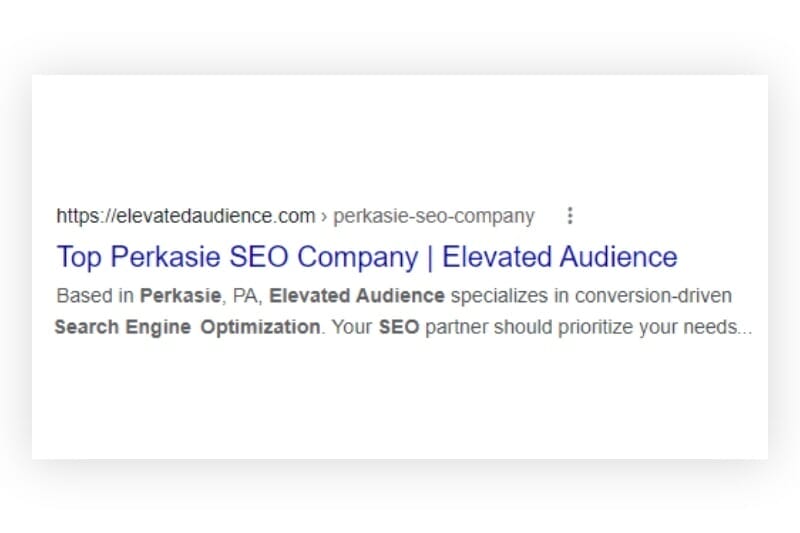
A page title is the first line of text that appears in the search results, and it’s displayed below the URL and above the meta description, and it’s the first thing that users see when they come across your website in the search results. The page title greatly impacts the click-through rate (CTR), as it helps search engines and users understand the page’s topic.
So, a well-written and optimized title can entice users to click through to your site, increasing the visibility and ranking of your website in search engines like Google.
- Write the title in a natural way that makes sense to the user. Avoid keyword stuffing or making the title sound unnatural.
- Include the main keyword at the beginning.
- Write variations of the primary keyword in the title to help search engines understand the context and intent of the page.
- Be unique and specific to the page it represents.
- Be different from other titles on your website to avoid duplicate content.
- Be compelling and engaging to encourage users to click through to the page.
Ideal Length
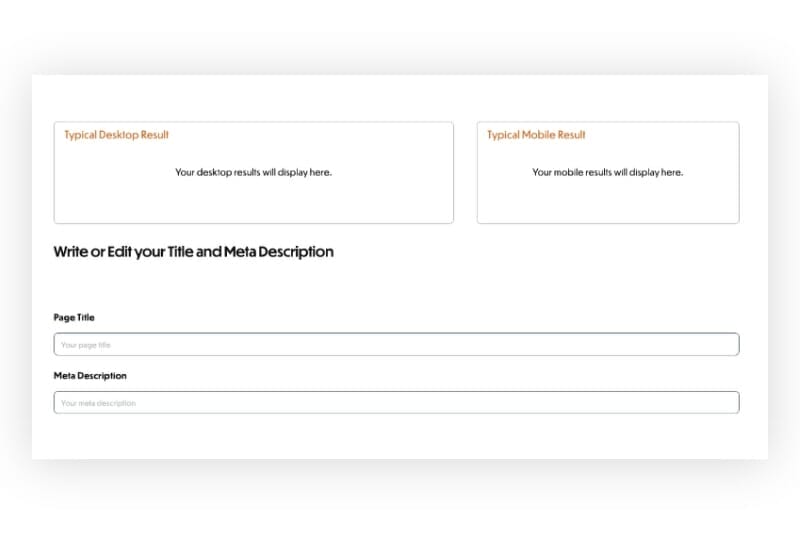
A title that is too short or too long can negatively impact its performance in search engine results. The ideal length of a page title is around 60 characters, which ensures that it is fully displayed in the search results. This also helps to keep the title concise and relevant to the user.
(Note: When creating your page title, it is important to remember that different search engines have different title character limits. Google, for instance, typically displays the first 50-60 characters of a title, while Bing and Yahoo display up to 70 characters.
Therefore, it’s best to keep the title between 50-60 characters!)
When creating page titles, use a title length checker tool to preview how your title will look in the SERP (search engine results page).
2. Meta Descriptions: More Than Just A Summary!
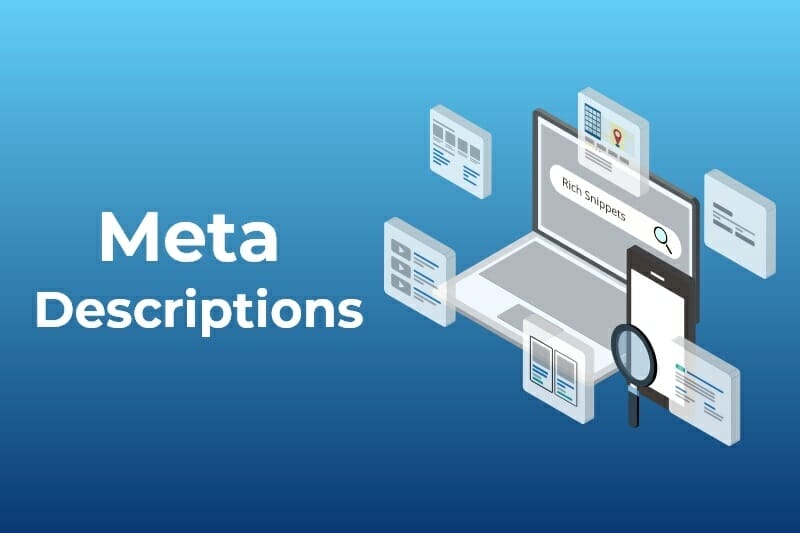
Meta descriptions summarize a webpage’s content and appear under the page title in the search engine results pages (SERPs).
However, the meta description is more than just an opportunity to give users a sneak peek of what they can expect on the webpage. In fact, it’s also a great way to increase your site’s CTR.
Writing an Effective Meta Description
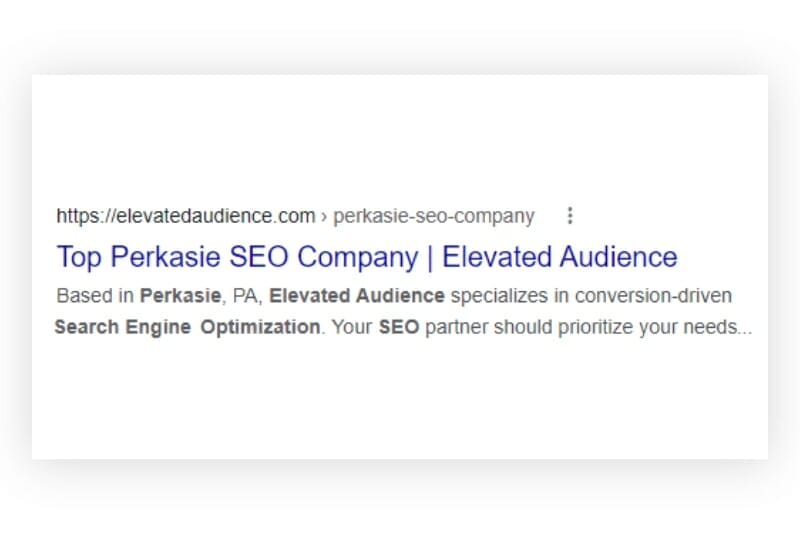
An effective meta description accurately reflects the webpage’s content, is concise, and is written in a way that entices users to click through to the page. To write an effective meta description, follow these tips:
- Keep it concise: The ideal length of a meta description is around 155 – 160 characters, which ensures that it is fully displayed in the search results.
- Use action words and calls to action: The right action words and calls encourage users to click through to the webpage.
- Use keywords: Use your primary keyword in the meta description, so a search engine knows the relevance of the webpage.
Using Meta Descriptions to Improve Your Website’s Visibility and Ranking
This is how you can use the meta description to improve your website’s visibility and ranking:
- Keep it unique and specific to the page: The meta description should be unique and specific to the page it represents. It should also be different from other meta descriptions on your website to avoid duplicate content.
- Write in the active voice: When crafting your meta descriptions, think of them as an invitation to your page. Avoid using dull, difficult, or cryptic language. Instead, clearly communicate what visitors can expect to find on your page.
3. Write Compelling Headlines
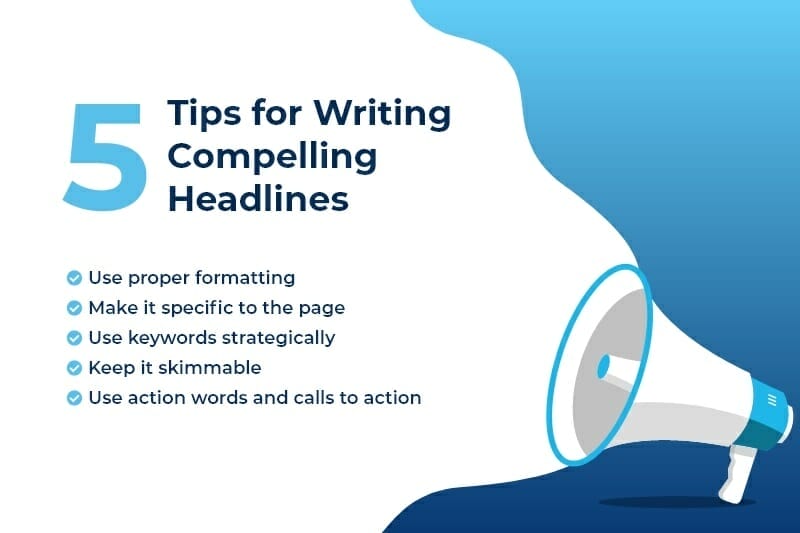
Headlines help to organize the content of a webpage and make it easy for users to skim the page and understand the main points.
Using these tips allows you to generate effective headlines:
- Use proper formatting: Use appropriate headings (H1, H2, H3, etc.) and organize them in chronological order to help users and search engines understand the structure and hierarchy of the content. Always make sure to only have one H1 tag and that it is clearly visible above the fold on both mobile and desktop devices.
- Make it specific to the page: Headlines should be tailored to the content of the page they are on and should be distinct from other headlines on the website to avoid repetition.
- Use keywords strategically: Incorporate keywords and keyword variations in the headlines to help search engines understand the relevance of the page and improve visibility.
- Keep it skimmable: Headlines should be skimmable, allowing users to understand the main points of the page quickly.
- Use action words and calls to action: Incorporate action-oriented words and phrases (e.g., “Discover,” “Learn,” “Get,” “Start”) and calls to action (e.g., “Sign up now,” “Download our guide,” “Book a consultation”) to encourage users to read further.
4. Content: Best Practices and Tactics to Avoid
Content is the main driver for user engagement and is the focal point of search engine algorithms. However, writing content for your website without following these practices will only result in wasted effort.
Best Practices
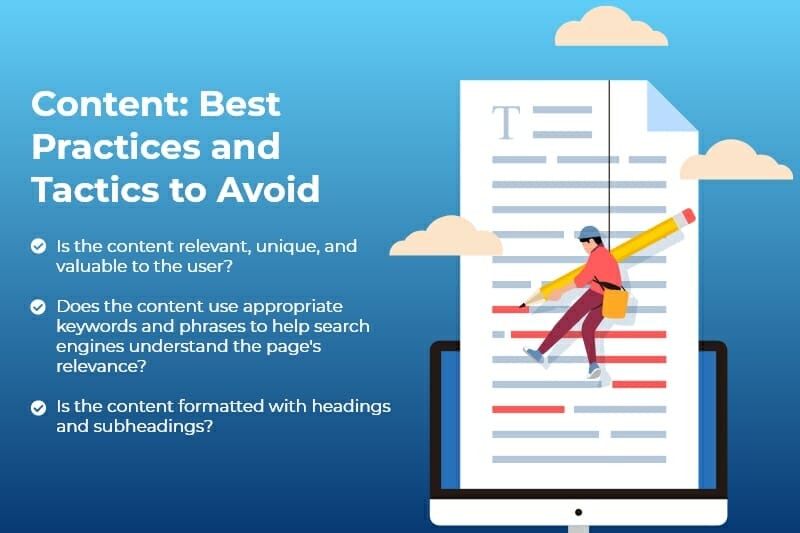
To evaluate if your content is following on-page SEO content best practices, ask yourself the following:
- Is the content relevant, unique, and valuable to the user?
- Does the content use appropriate keywords and phrases to help search engines understand the page’s relevance?
- Is the content formatted with headings and subheadings?
- Is the content optimized for readability, with short paragraphs and bullet points used to break up the text?
- Is the content of sufficient length, and does it fully cover the topic?
- Are images and videos used appropriately to enhance user experience and provide additional value?
- Are meta tags and schema markup used to provide additional information to search engines?
With the right strategy, your content can attract more traffic, improve user engagement, and increase your website’s ranking in search engine results.
Content Writing Mistakes to Avoid
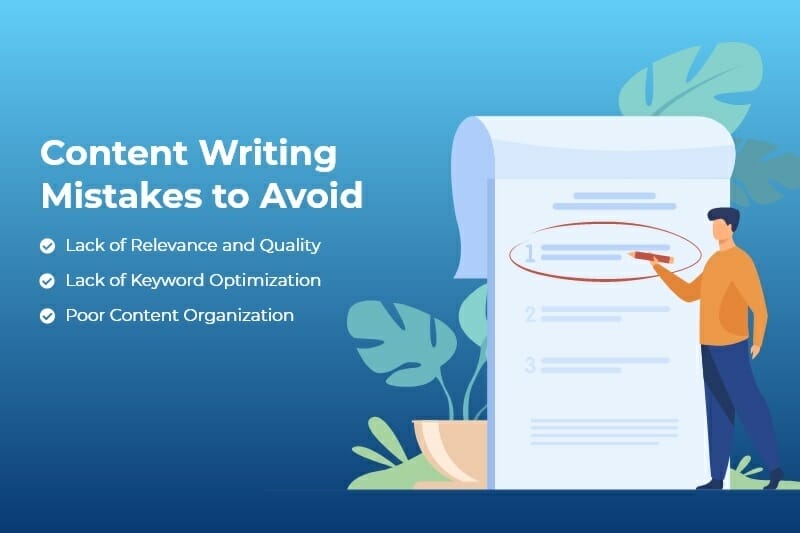
The main problems with content in on-page SEO are lack of relevance and quality, keyword optimization, and poor organization.
Lack of Relevance and Quality
This happens when the content is not tailored to the target audience or not providing value to the user. To solve this problem, consider the following solutions:
- Conduct keyword research to identify relevant topics and themes for your target audience.
- Create a content strategy that aligns with your SEO goals and targets specific user groups.
- Use tools to measure the quality of your content, such as readability scores and engagement metrics.
- Continuously review and update your content to ensure it stays relevant and valuable for your audience.
Lack of Keyword Optimization
This occurs when the content does not use the appropriate keywords and phrases to help search engines understand the page’s relevance. Consider the following solutions:
- Conduct keyword research to identify relevant keywords and phrases for your content.
- Incorporate keywords and phrases into your content naturally and meaningfully to the user.
- Use Yoast SEO, SEMrush, Surfer SEO, or other tools to measure the keyword density and optimize as needed.
Poor Content Organization
If your content is not well-structured and difficult to read:
- Use headings and subheadings to organize the content and make it easy to skim.
- Use bullet points and short paragraphs to break up the text and make it more readable.
- Use images and videos to break up the text and add visual interest.
- Use formatting options such as bold and italics to highlight important information.
- Ensure that the content flows logically and is easy to follow.
- Keep the content concise and to the point.
- Use Hemingway or Grammarly to check for readability and improve as needed.
- Regularly review and update the content to ensure it remains relevant and useful for the user.
5. Website Speed: Slow and Steady Doesn’t Win the Race
Website speed refers to the time it takes for a web page to load and be fully rendered on a user’s device. Ideally, you want your website to load in under two seconds. Slower than that leads to poor user experience, lowering your rank.
If this is the case, improve your website’s speed by following our free speed optimization guide or:
Optimizing Images and Other Media Files
- Use image compression tools to reduce the size of images without sacrificing quality.
- Use the appropriate image file format (e.g., JPEG for photographs, PNG for graphics with transparent backgrounds).
- Serve images in next-gen formats like WebP and AVIF, which can save up to 25-30% of file size.
- Use the lazy loading technique to load images only when the user scrolls to them.
Minimizing the use of Heavy Scripts and Plugins
- Audit all the scripts and plugins running on your website and remove the unnecessary ones.
- Use lightweight alternatives for heavy scripts and plugins.
- Delay the loading of non-critical scripts to improve the loading time of the above-the-fold content.
Reducing the Number of HTTP Requests
- Merge multiple CSS and JavaScript files into one file each to reduce the number of requests.
- Use CSS sprites to combine multiple images into one, reducing the number of requests.
- Minimize the use of redirects and external scripts.
Enabling Browser Caching
- Use a caching plugin to enable browser caching on your website.
- Set appropriate caching expiry time for different types of files.
- Use Google PageSpeed Insights or GTmetrix to check if the caching is working and if the expiry time is set correctly.
Using a Content Delivery Network (CDN)
- Use a Content Delivery Network (CDN) to distribute the files to multiple locations, reducing the loading time.
- Choose a CDN provider that has a global network of servers.
- Test the website’s loading time with and without CDN to measure the improvement.
Minifying Code
- Use tools like Minify Code, WillPeavy, and Closure Compiler to minify HTML, CSS, JavaScript, and all the code in your website, reducing the file size and improving the loading time.
Get the Most Out of Your On-Page SEO Efforts
By following the best practices and avoiding the common pitfalls outlined in this article, you can ensure that your website is optimized for better visibility and performance in SERPs.
If you want to take your on-page SEO efforts to the next level, consider reaching out to Elevated Audience for professional assistance. We also offer a free SEO audit report that can help you identify areas for improvement on your website.
Contact us today to learn more about how we can help you get the most out of your on-page SEO efforts!

